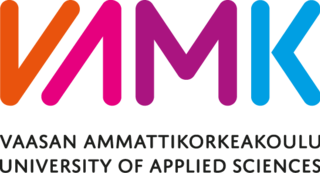
Postgraduate education, graduate education, or graduate school consists of academic or professional degrees, certificates, diplomas, or other qualifications usually pursued by post-secondary students who have earned an undergraduate (bachelor's) degree.

The Bologna Process is a series of ministerial meetings and agreements between European countries to ensure comparability in the standards and quality of higher-education qualifications. The process has created the European Higher Education Area under the Lisbon Recognition Convention. It is named after the University of Bologna, where the Bologna declaration was signed by education ministers from 29 European countries in 1999. The process was opened to other countries in the European Cultural Convention of the Council of Europe, and government meetings have been held in Prague (2001), Berlin (2003), Bergen (2005), London (2007), Leuven (2009), Budapest-Vienna (2010), Bucharest (2012), Yerevan (2015), Paris (2018), and Rome (2020).

Avans University of Applied Sciences is a Dutch high ranked vocational university. It is located in three cities: Breda, 's-Hertogenbosch, and Tilburg. The school has over 30,000 students studying 40 courses in 18 institutes. There are 3,000 employees.

The University of Macau is a public research university of Macau. The university campus is located in the east of Hengqin Island, Guangdong, on a piece of land leased to the Government of Macau and is under the jurisdiction of Macau.
A Master of Engineering is a professional master's degree in the field of engineering.
An institute of technology is an institution of tertiary education that specializes in engineering, technology, applied science, and natural sciences.
The Utrecht School for the Arts is a performing arts and visual arts educational institution in City of Utrecht, Province of Utrecht, Netherlands. The school opened for student enrollment in September 1987.

An ammattikorkeakoulu, abbreviated AMK, is a Finnish institution of higher education.

Savonia University of Applied Sciences is a local municipality-owned Finnish institution of higher education based in the cities of Kuopio, Iisalmi and Varkaus.

A vocational university or university of applied sciences (UAS), less commonly called a polytechnic university is an institution of higher education and increasingly research that provides applied professional education and grants academic degrees. It should not be confused with vocational schools or technical schools that do not meet the strict standards of higher education nor have the ability to grant officially accredited academic degrees.

Vaasa University of Applied Sciences popularly called VAMK, is an international higher education institution in Vaasa, Finland. VAMK educates Bachelors of Business Administration, Engineering, Hospitality Management and Social Services as well as Registered Nurses and Public Health Nurses in Finnish, Swedish and English for the demanding needs of the working life. It has approximately 3,300 students enrolled and a staff of circa 250 members.

Engineering education is the activity of teaching knowledge and principles to the professional practice of engineering. It includes an initial education, and any advanced education and specializations that follow. Engineering education is typically accompanied by additional postgraduate examinations and supervised training as the requirements for a professional engineering license. The length of education, and training to qualify as a basic professional engineer, is typically five years, with 15–20 years for an engineer who takes responsibility for major projects.

Kabul Polytechnic University is the main center of educating engineers in Kabul, Afghanistan. It was founded on 13 October 1963 as Kabul Polytechnic Institute and is located in 72 hectares of land in Karte Mamourin, North-Western Kabul. In the opening ceremony government officials from both Afghanistan and other countries were present. Since its establishment it has been considered one of the important entities in providing education and training.
Amsterdam University of Applied Sciences is a large vocational university located in Amsterdam, Netherlands. The AUAS mainly offers bachelor's degree programmes, but also has a number of (professional) master's degree programmes. For students from the AUAS' international partner institutes it is possible to study at the AUAS as an exchange student.
The Bachelor of Journalism (B.J.) degree is a degree awarded at some universities to students who have studied journalism in a three or four year undergraduate program. In the United States, some schools that do not award the B.J. degree instead confer a Bachelor of Arts, Journalism (B.A.J.), Bachelor of Arts in Journalism and Mass Communication (B.A.J.M.C.) or Bachelor of Science, Journalism (BSJ) that is often part of or in conjunction with a course of study in mass communication. Yet another epithetological version of the degree, conferred by The Henry W. Grady College of Journalism and Mass Communication at the University of Georgia, is the A.B.J. degree, the Latin equivalent of the B.J./B.A.J.

Inholland University of Applied Sciences is a large university of applied sciences located in eight main cities of the Randstad, the central-western region of the Netherlands and the country's economic, political and cultural hub. With over 37,000 students from more than 100 countries, the university follows the applied sciences mode of education.

The HAN University of Applied Sciences, mostly referred to as HAN, is one of the largest universities of applied sciences in the Netherlands. It offers bachelor's and master's degree programs to over 36,000 students. HAN is a knowledge institute for higher education in the Dutch province of Gelderland, with campuses in Arnhem and Nijmegen and a research center in Doetinchem.

Metropolia University of Applied Sciences is the largest University of Applied Sciences in Finland. The university offers a total of 93 degree programs in the fields of Business, Culture, Health Care and Social Services, and Technology.

The Lilongwe University of Agriculture and Natural Resources (LUANAR) is a university outside Lilongwe, Malawi. It was formed in 2011 by a merger between Bunda College of Agriculture of the University of Malawi and Natural Resources College (NRC).















